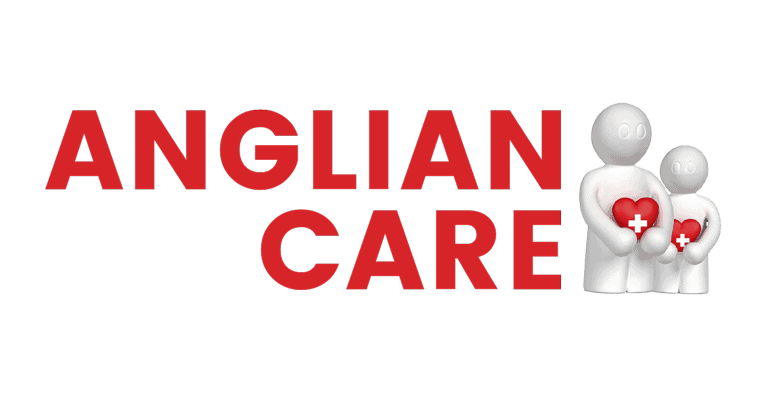The WHO Pain Management Ladder is a systematic approach to pain management, first introduced in 1986 for cancer patients. It comprises three steps to guide your treatment:
- Step 1: Non-opioid analgesics, like acetaminophen, for mild pain.
- Step 2: Weak opioids, such as codeine, combined with non-opioids for moderate pain.
- Step 3: Strong opioids like morphine for severe pain.
This framework promotes a balanced approach with options for both pharmacological and non-pharmacological therapies. Challenges exist, including addressing diverse pain mechanisms and the opioid crisis. Learning more about the latest recommendations and future directions can enhance your understanding.
Overview of the WHO Ladder
The WHO pain management ladder is a structured approach designed to help you effectively manage pain through a stepwise process. Introduced in 1986, it initially aimed to improve pain management specifically for cancer patients. The ladder's history reflects a significant evolution in understanding pain perception. Over the years, it has broadened to address various acute and chronic pain conditions, making it a versatile tool in healthcare.
The ladder consists of three main steps:
- Step 1: Non-opioid analgesics for mild pain. These include medications like acetaminophen and NSAIDs, which are often effective for managing minor discomfort.
- Step 2: Weak opioids combined with non-opioids for moderate pain. This step introduces medications such as codeine or tramadol, providing a more potent option for those experiencing increased pain.
- Step 3: Strong opioids for severe pain. Medications like morphine are utilized here, typically for patients with debilitating pain.
In 1996, the ladder was updated to include a fourth step emphasizing non-pharmacological treatments, highlighting a holistic approach to enhance quality of life. The ladder promotes a "by the clock, by the mouth, by the ladder" philosophy, encouraging regular oral administration of medications based on your pain intensity.
While the ladder has been beneficial, it has faced criticism for being overly simplistic and outdated. Ongoing calls for revisions aim to incorporate modern pain management strategies and individualized approaches, ensuring it remains relevant in today's healthcare landscape.
Steps of Pain Management
Understanding the steps of pain management is essential for effectively addressing your pain and improving your quality of life. The WHO Pain Management Ladder consists of three main steps, each tailored to different levels of pain intensity.
- Step 1: For mild pain, you'll typically start with non-opioid analgesics such as paracetamol or NSAIDs. These medications are generally well-tolerated and can provide significant relief for many individuals.
- Step 2: If your pain is moderate, you may shift to weak opioids like codeine, often combined with non-opioids. This combination can enhance pain relief while minimizing side effects.
- Step 3: For severe pain, strong opioids such as morphine are used. These powerful medications are essential for managing intense pain but require careful monitoring and patient education to mitigate risks.
Throughout this process, effective pain assessment is critical. Your healthcare provider will evaluate your pain intensity and response to treatment, allowing for adjustments as needed. Remember, this ladder emphasizes flexibility, meaning you can move up or down based on how your pain evolves.
Additionally, adjuvant medications like antidepressants and anticonvulsants may be integrated into any step to address specific pain types, particularly neuropathic pain. Incorporating non-pharmacological treatments, such as physical therapy or acupuncture, can also enhance your pain management strategy. By understanding and engaging with these steps, you're taking an active role in your pain management journey.
Limitations and Challenges
Limitations in the WHO Pain Management Ladder highlight significant challenges in contemporary pain management. One major issue is its unidirectional approach, primarily targeting physical pain without adequately addressing various pain mechanisms. This is especially problematic for neuropathic pain, where opioids often fall short.
You might encounter knowledge gaps among general practitioners regarding the ladder's application. This can lead to inappropriate referrals to pain specialists and misunderstandings about NSAID use. Prolonged use of NSAIDs alongside opioids can result in severe adverse effects, particularly in conditions like fibromyalgia that are poorly managed.
The original model of the ladder seems outdated, unable to accommodate the complexities of modern pain management. Today, there's an increasing need for individualized therapies that take into account the specific type and mechanism of pain. This is critical to effective treatment.
Moreover, the ongoing opioid crisis intensifies concerns about over-prescribing and addiction. Many practitioners are now more cautious, recognizing the necessity for updated pain management guidelines. These should reflect current practices and emphasize non-opioid and non-pharmacological treatments.
Key challenges include:
- Inadequate addressing of diverse pain mechanisms
- Knowledge gaps in general practice
- Risks of prolonged NSAID and opioid use
- Outdated ladder model
- Concerns stemming from the opioid crisis
Being aware of these limitations is essential for maneuvering through the complexities of pain management effectively.
Recommendations for Improvement
Improving pain management requires a shift towards more personalized and extensive strategies that address the complexities identified in the WHO Pain Management Ladder. By integrating multimodal therapies and emphasizing patient education, you can enhance the effectiveness of treatment plans tailored to individual needs.
To achieve this, consider the following recommendations:
| Strategy | Approach | Benefits |
|---|---|---|
| Multimodal Therapy | Combine pharmacological and non-pharmacological therapies. | Addresses various pain types and mechanisms. |
| Patient Education | Teach patients about medication usage and side effects. | Improves adherence and empowers patient involvement. |
| Updated Guidelines | Develop current treatment protocols reflecting evolving practices. | Guarantees the use of the most effective strategies. |
Integrating therapies like NSAIDs for chronic nociceptive pain and antidepressants for neuropathic pain can enhance patient outcomes. Non-pharmacological options, such as yoga, acupuncture, and psychotherapy, should also be part of the conversation.
Furthermore, investing in patient education is essential. When you inform patients about their treatment options, potential side effects, and self-management strategies, you empower them to take an active role in their care. This approach not only improves adherence but also leads to better overall health outcomes.
Ultimately, embracing a thorough, personalized pain management strategy will help address the limitations of the WHO Pain Management Ladder, fostering a more effective and compassionate approach to pain relief.
Future Directions in Pain Management
The future of pain management is shifting towards more tailored approaches that recognize the unique experiences of each patient. You'll see a significant emphasis on individualized approaches, moving away from the outdated one-size-fits-all model. This means that your specific pain type, mechanisms, and how you respond to treatment will all play a significant role in determining your care plan.
As part of this shift, non-pharmacological therapies are gaining recognition as essential components of extensive pain management. Techniques such as cognitive behavioral therapy, physical therapy, and complementary treatments like acupuncture can enhance your overall pain management strategy. These methods help address not just the physical aspects of pain but also the emotional and psychological facets.
Moreover, ongoing research is focusing on newer pharmacological options and minimally invasive interventional techniques. For example, nerve blocks and neuromodulation can provide effective pain relief while reducing dependence on opioids, which is a growing concern.
To adapt to these advancements, continuous education for healthcare providers is essential. This guarantees they stay informed about evolving pain management guidelines and are equipped to incorporate modern strategies effectively.
Lastly, developing multidisciplinary care teams will be encouraged. These teams combine expertise from various fields, optimizing treatment outcomes for patients like you. By integrating diverse perspectives and skills, the aim is to create a holistic approach to pain management that truly addresses your needs.
Frequently Asked Questions
What Is the Who Pain Relief Ladder?
When you assess chronic pain, you'll find that effective management often requires a structured approach. Utilizing a tiered system for medication helps you address varying pain levels and optimize relief based on individual needs.
How to Use the Who Pain Ladder?
To use the WHO Pain Ladder, assess pain regularly and choose appropriate medication types based on severity. Start with non-opioids for mild pain, then add weak opioids for moderate pain, and strong opioids for severe pain.
Is the Who Pain Ladder Still Valid?
The WHO guidelines still hold value, but you need to adapt them for chronic pain. Consider pain assessment, opioid alternatives, a multidisciplinary approach, and patient education to mitigate side effects while managing cancer pain effectively.
What Is the 4th Step of the WHO Pain Ladder?
The fourth step in pain management emphasizes a holistic approach, integrating non-pharmacological treatments like physical therapy and psychological support. It encourages personalized therapies, including adjuvant medications, to effectively address various pain types and enhance quality of life.





